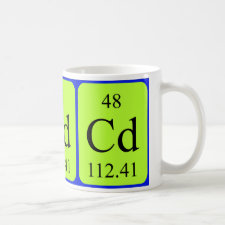
Authors: Meng SM, Jing BQ, Fan YQ, Liu YW, Guo Y
Article Title: Spectrophotometric determination of trace cadmium in vegetables with 3,5-bis(4-phenylazophenylaminodiazo)benzoic acid.
Publication date: 2011
Journal: Journal of Analytical Chemistry
Volume: 66
Issue: (1)
Page numbers: 31-36.
DOI: 10.1134/S1061934811010138
Alternative URL: http://www.springerlink.com/content/n4n23741w27gq482/
Abstract: A new highly sensitive and selective chromogenic reagent, 3,5-bis(4-phenylazophenylaminodiazo)benzoic acid (BPPABA) has been synthesized and applied to the determination of trace cadmium(II) in vegetables. The method is based on the color reaction between BPPABA and cadmium (II). In the presence of Triton X-100, cadmium(II) reacts with BPPABA in Na2B4O7-NaOH buffer solution (pH 10.5), forming red complex with maximum absorption at 530 nm. Under the optimal conditions, Beer's law is obeyed within 0–12 μg of cadmium within 25 mL of solution, and the apparent molar absorptive coefficient of the complex is 2.8 × 105 L/mol cm. The detection limit and the relative standard deviation were found to be 0.92 μg/L and 1.0%, respectively. Interference of foreign ions was also investigated. Most of the metal ions are tolerated in considerable amounts except for Hg(II), Cu(II) and Ni(II). To eliminate the interference of foreign ions, metal ion imprinted polymer technique was utilized.
Template and target information: Cd(II), cadmium ion
Author keywords: 3,5-bis(4-phenylazophenylaminodiazo)benzoic acid (BPPABA), Spectrophotometry, cadmium, vegetables



Join the Society for Molecular Imprinting

New items RSS feed
Sign-up for e-mail updates:
Choose between receiving an occasional newsletter or more frequent e-mail alerts.
Click here to go to the sign-up page.
Is your name elemental or peptidic? Enter your name and find out by clicking either of the buttons below!
Other products you may like:
 MIPdatabase
MIPdatabase









